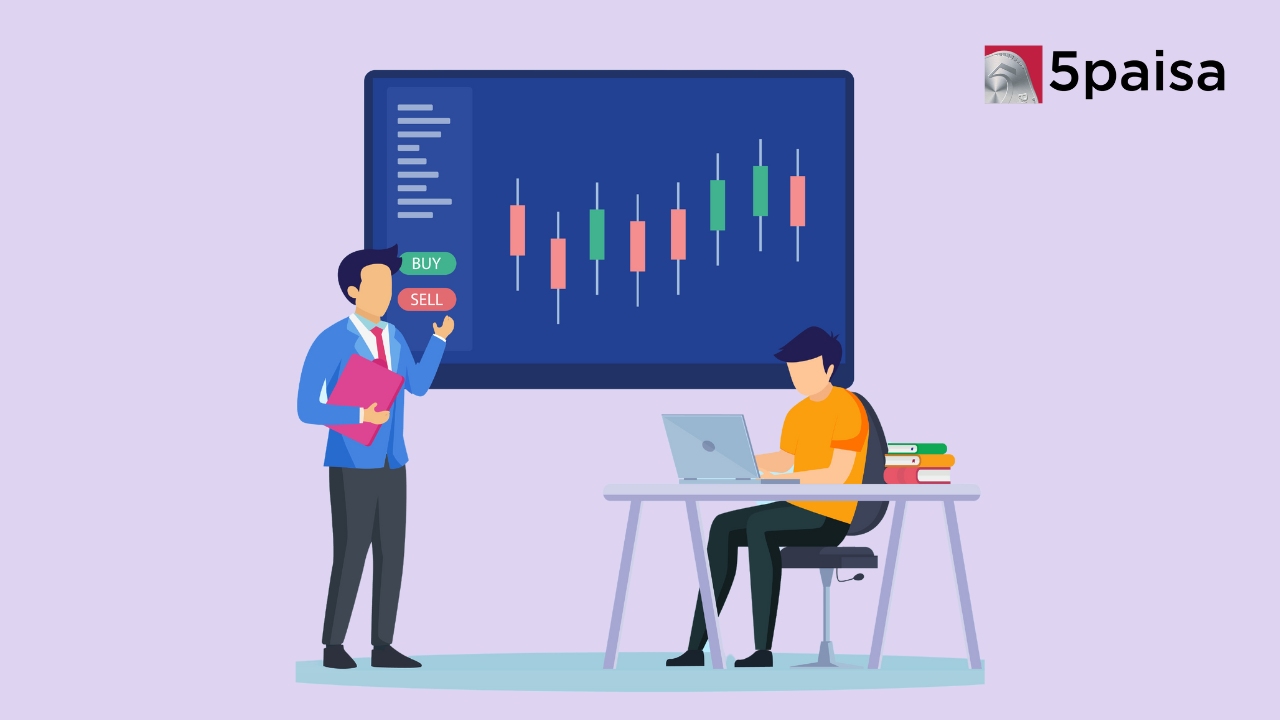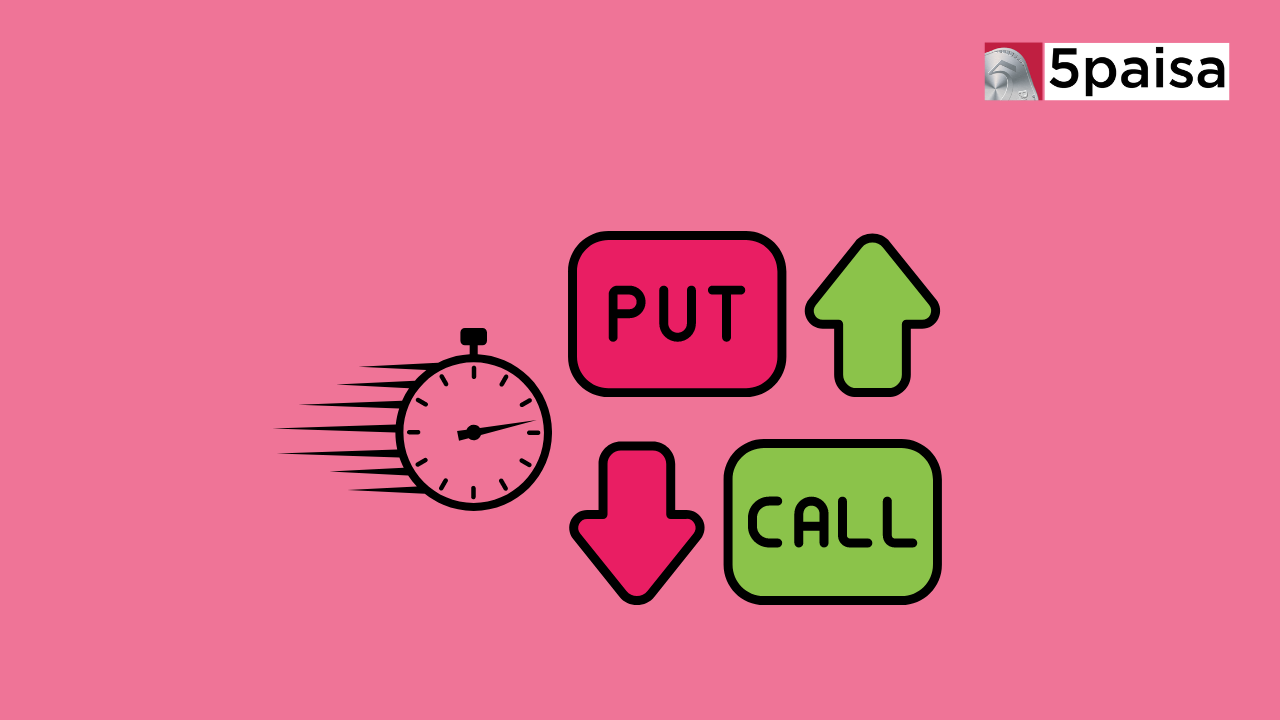Beginner’s Guide to Derivatives Trading with F&O 360
Long Call Calendar Spread

Last Updated: 9th December 2022 - 11:52 am
A Long Call Calendar Spread is initiated by selling one call option and simultaneously buying a second call option of the same strike price of underlying assets with a different expiry. It is also known as Time Spread or Horizontal Spread. The purpose of this strategy is to gain from Theta with limited risk, as the Time Decay of the near period expiry will be faster as compared to the far period expiry. As the near period option expires, far month call option would still have some premium in it, so the option trader can either own the far period call or square off both the positions at same time on near period expiry.
When to initiate a Long Call Calendar Spread?
A Long Call Calendar Spread can be initiated when you are very confident that the security will remain neutral or bearish in near period and bullish in longer period expiry. This strategy can also be used by advanced traders to make quick returns when the near period implied volatility goes abnormally high as compared to the far period expiry and is expected to cool down. After buying a Long Calendar Spread, the idea is to wait for the implied volatility of near period expiry to drop. Inversely, this strategy can lead to losses in case the implied volatility of near period expiry contract rises even if the stock price remains at same level.
How to construct a Long Call Calendar Spread?
A Long Call Calendar Spread is implemented by selling near month at-the-money/out-the-money call option and simultaneously buying far month at-the-money/out-the-money call option of the same underlying assets.
|
Strategy |
Buy far month ATM/OTM call and sell near month ATM/OTM call. |
|
Market Outlook |
Neutral to positive movement. |
|
Motive |
Hopes to reduce the cost of buying far month call option. |
|
Risk |
Limited to the difference between the premiums. |
|
Reward |
Limited if both the positions squared off at near period expiry. Unlimited if far period call option hold till next expiry. |
|
Margin required |
Yes |
Let’s try to understand with an example:
|
Nifty Current spot price |
9000 |
|
Sell near month ATM call strike price Rs. |
9000 |
|
Premium received (per share) Rs. |
180 |
|
Buy far month ATM call strike price Rs. |
9000 |
|
Premium paid (per share) Rs. |
250 |
|
Lot size (in units) |
75 |
Suppose Nifty is trading at 8800. An investor, Mr. A is expecting no significant movement in near month contract, so he enters a Long Call Calendar Spread by selling near month strike price of 9000 call at Rs.180 and bought 9000 call for Rs.250. The net upfront premium paid to initiate this trade is Rs.70, which is also the maximum possible loss. The idea is to wait for near month call option to expire worthless by squaring off both the positions in near month expiry contract or reduce the cost of far month buy call by setting off the profit made from the near month call option. Another way by which this strategy can be profitable is when the implied volatility of the near month falls.
For the ease of understanding, we did not take into account commission charges. Following is the payoff chart of the expiry.

The Payoff Schedule on near period expiry date:
|
Near period expiry if NIFTY closes at |
Net Payoff from near period Call sold (Rs.) |
Theoretical Payoff from far period call Buy (Rs.) |
Net Payoff at near period expiry (Rs.) |
|
8700 |
180 |
-190 |
-10 |
|
8800 |
180 |
-160 |
20 |
|
8900 |
180 |
-120 |
60 |
|
9000 |
180 |
-70 |
110 |
|
9100 |
80 |
-10 |
70 |
|
9200 |
-20 |
+60 |
40 |
|
9300 |
-120 |
140 |
20 |
|
9400 |
-220 |
230 |
10 |
|
9500 |
-320 |
330 |
10 |
Following is the payoff schedule till far expiry, where maximum loss would be limited up to 320 Rs (250+70), Rs 70 is from near expiry and Rs 250 is the premium of far month call bought. Maximum profit would be unlimited since far month call bought will have unlimited upside potential.
Net Combined Payoff Schedule on next period expiry date:
|
NIFTY closing price on Near and Far period expiry |
Theoretical Payoff from far period call Buy (Rs.) |
Net Payoff at near period expiry (Rs.) |
Net Payoff at Far period expiry (Rs.) |
|
8700 |
-250 |
-10 |
-260 |
|
8800 |
-250 |
20 |
-230 |
|
8900 |
-250 |
60 |
-190 |
|
9000 |
-250 |
110 |
-140 |
|
9100 |
-150 |
70 |
-80 |
|
9200 |
-50 |
40 |
-10 |
|
9300 |
50 |
20 |
70 |
|
9400 |
150 |
10 |
160 |
|
9500 |
250 |
10 |
260 |
The Payoff Graph

Impact of option Greeks:
Delta: The net Delta of a Long Call Calendar will be close to zero or marginally positive. The negative Delta of the near month short call option will be offset by positive Delta of the far month long call option.
Vega: A Long Call Calendar has a positive Vega. Therefore, one should buy spreads when the volatility of far period expiry contract is expected to rise.
Theta: With the passage of time, if other factors remain same, Theta will have a positive impact on the Long Call Calendar Spread in near period contract, because option premium will erode as the near period expiration dates draws nearer.
Gamma: Gamma estimates how much the Delta of a position changes as the stock prices changes. The near month option has a higher Gamma. Gamma of the Long Call Calendar Spread position will be negative till near period expiry, as we are short on near period options and any major upside movement till near period expiry will affect the profitability of the spreads.
How to manage risk?
A Long Call Calendar spread is exposed to limited risk up to the difference between the premiums, so carrying overnight position is advisable but one can keep stop loss on the underlying assets to further limit losses.
Analysis of Long Call Calendar Spread strategy
A Long Call Calendar Spread is the combination of short call and long call option with different expiry. It mainly profits from Theta i.e. Time Decay factor of near period expiry, if the price of the security remains relatively stable in near period. Once the near period option has expired, the strategy becomes simply long call, whose profit potential is unlimited.
- Margin Plus
- FnO360
- Rich Data
- Derivatives Strategies
Trending on 5paisa
Futures and Options Related Articles
Disclaimer: Investment in securities market are subject to market risks, read all the related documents carefully before investing. For detailed disclaimer please Click here.
 5paisa Research Team
5paisa Research Team
 Sachin Gupta
Sachin Gupta




